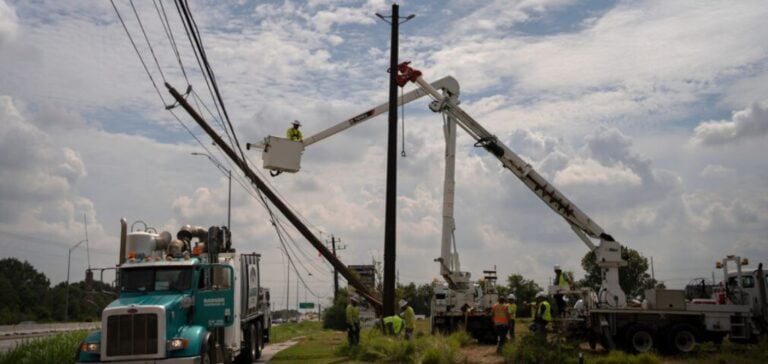Hurricane Beryl revealed major vulnerabilities in the East Texas power grid.
On July 8, the storm caused outages affecting nearly three million customers in the state, with around 1 million remaining without power as a result of the storm.
Faced with this situation, Texas Governor Greg Abbott ordered the Public Utility Commission of Texas to investigate the reasons for the extended restoration times.
A study conducted by the University of Houston’s Hobby School of Public Affairs and Texas Southern University’s Barbara Jordan-Mikey Leland School of Public Affairs revealed that 26% of respondents are considering purchasing a generator or improving the maintenance of their existing equipment.
Network resilience efforts called into question
The Texas Advanced Energy Business Alliance (TAEBA) on July 18 called on Texas leaders to re-evaluate their approach to grid resilience.
Matt Boms, executive director of TAEBA, said that solar panels, battery storage and other energy resources located in homes and businesses can bring significant relief to Texans disconnected from the grid.
However, he criticized utility companies for discouraging these solutions while investing heavily in expensive and unreliable gas generators when needed.
CenterPoint Energy, which experienced the largest outages with around 2.6 million customers affected, was unable to respond in time for this publication.
Evolution of distributed generation resources
In December, ERCOT (Electric Reliability Council of Texas) reported that its annual estimates for distributed generation resources have increased almost sixfold over the past seven years, from 650 MW in 2015 to 3,850 MW in 2022.
The biggest increase came after the deadly winter storm of February 2021, which left around four million customers in the dark for several days.
Joshua Rhodes, a researcher at the University of Texas Energy Institute and non-resident scholar at Columbia University, explained that sales of backup systems typically increase after disasters such as the California wildfires.
According to him, only solar systems would have an impact on grid prices, as running a backup generator on natural gas is too expensive and these are generally not allowed to backfeed the grid in residential systems.
Reactions and outlook
For large-scale solar power, the increase in solar production since Hurricane Beryl has generally coincided with lower real-time marginal rental prices at the Houston Hub, compared with the averages for the corresponding dates from 2019 to 2023.
Joshua Rhodes also pointed out that solar systems without batteries do not generate electricity when the grid is down, limiting their resilience in the event of an outage.
Solar systems coupled with batteries can insulate a home and provide some resilience, but the storage cost required to cool a home entirely in the Houston summer remains high.
Fossil fuel generators, on the other hand, can provide a large amount of electricity but require a constant supply of fuel.
Those connected to the natural gas grid are more convenient, but generate a lot of noise and local air pollution if numerous in a small area.
The vulnerability of the Texas energy grid to natural disasters is prompting consumers and authorities alike to reconsider distributed energy solutions.
The question remains whether these measures will be sufficient to strengthen the grid’s resilience in the face of climate change and increasingly frequent extreme weather events.






















